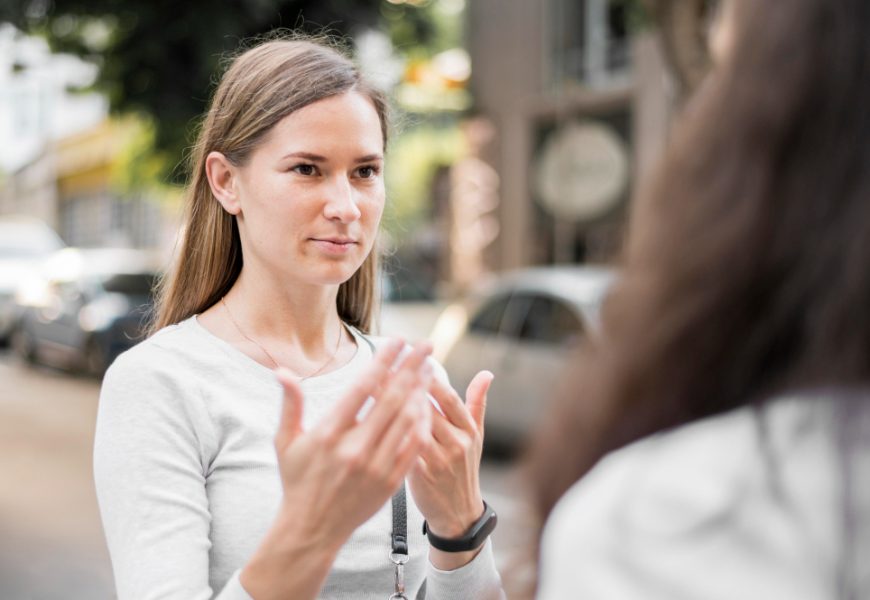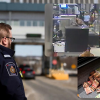Understanding the profound impact of nonverbal communication
Understanding the profound impact of nonverbal communication begins with recognizing how much of human interaction takes place beyond the spoken word. Body language is not limited to exaggerated hand gestures or obvious expressions—it encompasses subtle shifts in posture, fleeting micro-expressions, the position of one’s arms, the movement of the eyes, and even unconscious habits such as tapping a foot or adjusting clothing. Every one of these physical signals offers insight into emotions and intentions that words may not fully explain or may even deliberately conceal. Whereas verbal language can be rehearsed, carefully chosen, or even misleading, body language often exposes a truer reflection of what someone feels under the surface. For this reason, communication experts and psychologists agree that a majority of emotional meaning in face-to-face exchanges is conveyed through nonverbal channels rather than the spoken words themselves.
Consider the simple everyday moment when someone says, “I’m fine,” yet their hunched shoulders and lack of eye contact reveal quite the opposite. In such situations, we instinctively trust the signal we perceive visually over the message we hear verbally. It is this disconnect that has granted body language its reputation as “speaking louder than words.” From an innocent nod that signals understanding, to a nervous hand movement betraying discomfort, these cues amplify and often outweigh what is said aloud. Ultimately, this dynamic highlights that communication is not one-dimensional; it is a multi-layered process where the visible and silent dimension often has the final say in how people interpret one another’s intentions.
The evolutionary significance of nonverbal cues
When exploring why body language carries such weight, it is helpful to consider its roots in human evolution. Long before speech existed, early humans relied on physical signals, tone of voice, and environmental responsiveness to coordinate with one another. A raised arm, widened eyes, or a sudden shift in posture could warn of danger or establish safety. Survival depended heavily on being able to read these cues instinctively—whether for detecting aggression, forming bonds of trust, or negotiating social hierarchies within a group.
Even today, remnants of those ancient instincts live within us. People still read crossed arms as a barrier or self-protective stance, dilated pupils as a sign of sudden interest, and a genuine smile as a marker of safety and connection. What is striking is that this reading process happens almost instantly at a subconscious level. We often sense distrust or discomfort not because of anything a person has said, but because of inconsistencies between their verbal statements and the silent information their body conveys. This mismatch—between what we hear and what we see—triggers discomfort or doubt, and it explains why instincts about a conversation can feel accurate long before rational explanations catch up. Body language, then, is not simply an “extra” feature of communication; it is a foundational element anchored in a survival system far older than spoken language itself.
How body language influences relationships and decisions
The real power of body language is felt in the social, personal, and professional spheres where judgments and impressions are often made in seconds. In formal settings such as leadership, interviews, or negotiations, words matter, yet how those words are delivered often carries more influence. Leaders who stand with an open posture, steady eye contact, and calm hand movements are perceived as more credible and inspiring than those who fidget or avoid gaze, even if their policies or arguments are equally sound. Confidence and authority are silently communicated before complex ideas can even be articulated.
In job interviews, for example, a candidate may have all the right answers prepared, but tense shoulders or nervous glances can betray insecurity, potentially undermining their credibility. Similarly, someone who responds with measured breathing, relaxed gestures, and steady presence projects composure and trustworthiness, often leaving a stronger impression than words alone.
Outside professional settings, body language plays a decisive role in personal relationships. A friend leaning in during conversation communicates warmth and attention, while repeated glances at a phone reveal detachment regardless of polite words of interest. In romantic connections, attraction is often established through small cues such as mirroring gestures, prolonged eye contact, or open body orientation long before words of affection are spoken. These unspoken signals guide people in decoding one another’s sincerity, compatibility, and commitment. In this way, body language quietly shapes the foundation of trust, rapport, and emotional closeness in every type of relationship.
Why the body is harder to conceal than words
To truly understand why body language often speaks louder than words, one must consider the limitations of verbal language. Words can be manipulated, twisted, misinterpreted, or deliberately used to hide one’s true intent. Someone can insist they are confident, calm, or trustworthy, but their body may betray otherwise. Unlike speech, which is consciously controlled, much of body language arises unconsciously in reaction to genuine emotions. It is incredibly difficult to monitor and regulate the thousands of small, involuntary movements that occur when we feel nervous, excited, threatened, or joyful.
There is also a universal component to body language that transcends cultures. While interpretations of certain gestures may vary, basic human emotions such as anger, sadness, happiness, surprise, and fear are expressed similarly across the world. A furrowed brow, watery eyes, or an authentic smile can be recognized almost universally. This shared human understanding allows people to connect emotionally even when they do not share a spoken language. Travelers, for example, often find themselves able to bond with strangers through nothing more than a warm smile or a nod of appreciation.
This universality reveals body language as a more direct and reliable channel for interpersonal understanding than speech alone. For those seeking to lead, persuade, negotiate, or build lasting relationships, paying close attention to both one’s own nonverbal presence and the signals of others becomes an invaluable skill. Truly effective communicators are not just eloquent speakers but also keen observers, capable of aligning their words with their nonverbal cues to radiate authenticity.
Body language speaks louder than words because it illuminates what words often obscure. Rooted in ancient survival instincts, expressed universally across human cultures, and constantly present in modern interactions, body language serves as the unspoken yet essential layer beneath conversation. It shapes first impressions, builds or erodes trust, and reveals emotion in ways speech cannot fully capture. While words remain important, it is often the tone, the stance, the gaze, or the subtle gesture that decides whether we believe them. In every sphere of life—personal, professional, or social—understanding and mastering this silent language proves that what goes unspoken is often what matters most.








